| Title | Pages |
|---|---|
| Glaucium cappadocicum: in vitro Antioxidant, Antimicrobial, Anticholinesterase Inhibition Properties This study evaluated the total phenolic and flavonoid material content as well as the antioxidant, antibacterial, and anticholinesterase activities of extracts prepared from the endemic Glaucium cappadocicum plant. The extracts' antioxidant properties were assessed using the DPPH and FRAP methods, their antibacterial effects were assessed using the disk diffusion method on Gram positive and Gram negative bacteria, and their ability to inhibit cholinesterase activity was assessed using the Ellman method. In all biological activity assays, the alkaloid extract had the maximum activity. Especially in enzyme inhibition studies, alkaloid extract showed stronger inhibition than the standard inhibitor tacrine. These findings are the first report showing that high concentrations of compounds with antioxidant, anti-acetylcholinesterase, and antibacterial activity can be found in extracts from Glaucium cappadocicum. 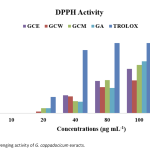
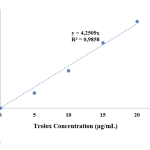
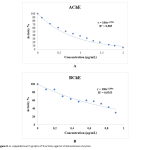
|
1 - 9 |
| Capsaicin Shows Species and Strain-specific Activity: Investigation of the Antibacterial Effects on the Oral Pathogen Streptococcus mutans and the Oral Probiotics Streptococcus salivarius M18 and K12 Extensive research has investigated capsaicin (CAP), the primary bioactive compound in chili peppers, to explore its diverse pharmacological and physiological properties. Recently, the focus has shifted to understanding the potential effects of CAP on gut microbiota due to the strong link between gut bacterial profile and diet. However, there has been no research on the effects of CAP on oral microbiota. Therefore, our study aimed to explore the antibacterial effects of CAP on two oral probiotics, Streptococcus salivarius M18, and S. salivarius K12, along with the oral pathogen S. mutans. Previously, the anti-cancer activity of CAP had been demonstrated, and in accordance with these findings, here, we show its growth inhibitory activity on colorectal cancer cell lines. However, this study is the first to examine the impact of CAP on specific oral microorganisms while considering the oral consumption of CAP and the interconnectedness of the oral and gut microbiomes. The findings revealed that CAP exhibited antibacterial properties against the M18 strain at concentrations exceeding 100 μg/mL. Surprisingly, it did not show any growth-inhibitory effects on S. salivarius K12, even at a concentration of 2 mg/mL. Similarly, CAP did not inhibit the growth of S. mutans, a significant factor in dental caries. These results suggest that CAP's effects are species and strain-specific, indicating potential changes in the oral microbiota upon CAP consumption. 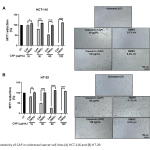
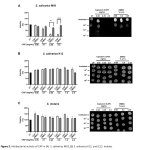

|
11 - 19 |
| Parental Care and Nest Properties in the European Roller, Coracias garrulus, in a Novel Nesting Site Iinvestigated parental behavior and nest site occupancy of the European Roller, Coracias garrulus in a novel breeding site, 10 cm diameter pipes in retaining walls in 2020–22 in Corum, Turkey. They occupied 6 holes for 12 nesting attempts across three years. Nest height from the ground was 4.7±0.3 m (n = 12). I video-recorded the nest holes during the incubation and nestling periods for 22.9 and 25 hours in total, respectively. Males and females shared incubation and nestling provisioning tasks. Nest attentiveness was 97.9%±0.79. Average feeding rate of nestlings was 10.86±2.15 trips h-1. Feeding rates increased from early (5.94±1.09 h-1) to late (15.8±2.04 h-1) nestling ages significantly. A literature review of species in the order showed that most species were relatively similar in development times but that little data is available on parental behavior. More studies of parental behavior in this order are needed. 

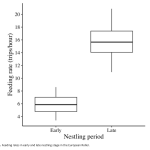
|
21 - 29 |
| Printed Electronics-Based Biosensors Printed electronics have attracted enormous interest owing to their significant production capability, low cost, and environmentally friendly properties. Printed electronics-based biosensors have also achieved increasing attention in different domains that range from laboratory to home for many applications. They will be necessary for implementing next-generation platforms because printing simplifies the fabrication of platforms on several thin, rigid, and flexible substrates. Moreover, the printed electronics-based biosensors show an excellent chance to facilitate fast, sensitive, and real-time screening of several molecules to exploit their features. Printing technology strongly impacts assembling more customizable and straightforward production of biosensors with great resolution and combined with microfluidic and electronics systems. This review summarizes recent progress in printed electronics-based biosensors to produce various electronic devices and circuits. Also, it supplies a review of the properties of printed electronics-based biosensors in different applications. In the end, up-to-date experiments of the latest studies of the printed electronics-based biosensors for various target molecules are reported. 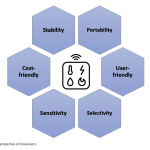

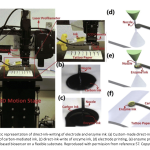

|
31 - 40 |
| Synthesis of Metal Ion Imprinted Microspheres and Investigation of Their Detection Performance Against Some Metal Ions by ICP-OES In this study, ion-imprinted polymers were prepared. These polymers can be used for the selective removal of Cu(II) ions from aqueous solutions. To this end, (E)-2-hydroxy-5-((vinylphenyl)diazonyl) benzaldehyde was used as a functional monomer in the synthesis stage of the polymeric adsorbent. Cu(II) imprinted poly[Cu(C15H11N2O2)] microspheres have been synthesized by dispersion polymerization technique through the interaction of the template molecule Cu(II) ion with the functional monomer. The specific surface area of Cu(II) imprinted poly[Cu(C15H11N2O2)] microspheres was 374.26 m2/g. The swelling rate was 80%. The maximum adsorption capacity, the optimum pH, and the adsorption equilibrium time were determined to be 153.03 mg/g, in the range of 8-10, and 30 min, respectively. According to the elemental analysis results, before imprinting; C%: 55.72, H%: 6.756, N%: 0.555 were found to be C%: 58.81, H%: 6.998, N%: 0.570 after imprinting. The increase in the percentages of C, H and N showed that the remaining molecule moved away from the structure. The relative selectivity coefficients of the imprinted microspheres were found to be 13.09, 57.88, 44.72, and 35.01 for the ion pairs as Cu(II)/Ni(II), Cu(II)/Pb(II), Cu(II)/Zn(II) and Cu(II)/Co(II), respectively. These results showed that the Cu(II)-imprinted microspheres were more selective with respect to Cu(II) ions. Reproducibility studies showed that Cu(II) imprinted poly[Cu(C15H11N2O2)] microspheres can be used repeatedly without a significant decrease in adsorption capacity. 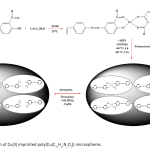
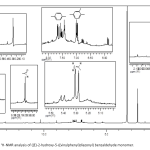

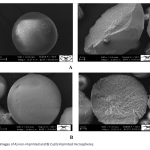
|
41 - 54 |
| The Exosome Isolation and Characterization From Dld-1 Cell Line Media Exosomes, as extracellular organelles, are the most well-known vesicles among microvesicles. They are released from almost all body fluids as well as cells. Exosomes, which have gained popularity in biology studies with their nano-level dimensions (30-200nm) and membrane structures, are primarily used in drug encapsulation, regeneration, and cell-free cellular therapy. The fact that exosomes, which also function as biomarkers, have an ever-expanding area of use has led researchers to search for the isolation and characterization of this vesicle. In this study, the isolation of exosomes of the DLD-1 colorectal cancer line was carried out by ultracentrifugation method and characterized biophysically and biochemically by SEM, NTA, and flow cytometry, and the proliferative effect of these exosomes on HT29 cells, one of the other colorectal cancer lines, was investigated. As a result, it was proved that the isolated vesicles were morphological and size-appropriate to the literature and expressed CD63 and CD81 proteins. It was observed that DLD-1 exosomes increased proliferation on the HT29 cell line in a dose-dependent manner and 3.134μg exosomes were the statistically most effective dose. Within the framework of the findings, this study could be an excellent reference for exosome isolation and characterization. 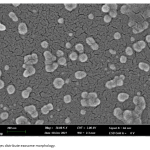
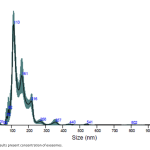
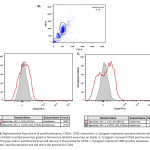
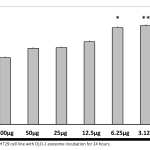
|
55 - 61 |